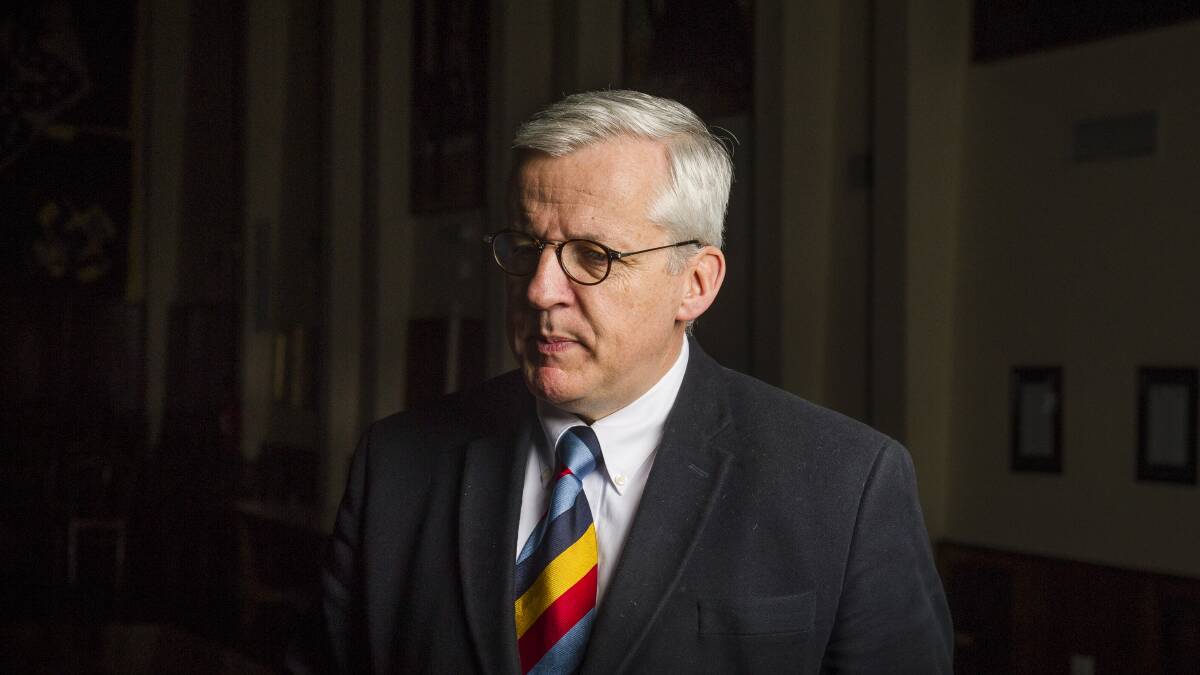
Threats in the Indo-Pacific region have dominated headlines in recent months but a threat closer to home is challenging the way Defence operates its recruitment process.
Subscribe now for unlimited access.
or signup to continue reading
The rising threat of politically-motivated extremism has become a large focus of domestic intelligence and security agencies in recent years.
But the issue has caused further alarm as the Australian Security and Intelligence Organisation warned extremist groups were looking to the military for additional training and capability.
A new framework, allowing ASIO and Defence to share intelligence over any personnel suspected of having links to the violent nationalist groups, has been in operation since May.
It allows the spy agency to proactively provide security assessments of flagged individuals to Defence to stamp out potential members with radical ideological views.
National security expert and former military intelligence officer Professor John Blaxland said the issue had been exacerbated during the COVID-19 pandemic.
It made the issue more complex as vetting processes within Australian Defence Force were already under pressure.
"It's been accelerated through COVID but technology has enabled extremist militant groups to have a far broader and deeper reach than was ever imaginable," he said.
"Whom we have in the past considered vulnerable young people is now a much broader, larger pool of people.
"Today, we face the situation where a young man, but possibly a young women as well, sitting in the basement, online, being fed images, YouTube clips, stories, that are reinforced in a vicious feedback loop."
The spy agency's director-general Mike Burgess also warned the extremists of the modern era were "young, well-educated, articulate, and middle class", making them tougher targets to weed out.
ASIO said the average age of people investigated was 25, overwhelmingly male, but children as young as 15 and 16 were also being radicalised.
But the creation of a sharing agreement between Defence and ASIO was a good step forward, Prof Blaxland said.
It meant the resource-intensive work wasn't being doubled up within both agencies and it allowed ASIO to share information collected in its extensive source networks.
"[The new protocol] reflects a growing trend amongst the national security community to collaborate on a range of issues and in part, that's because in the past, in the analogue era, the distinction between the domains was much clearer," he said.
"Now the distinction is blurred, but in addition, the volume of data and information has just absolutely mushroomed."

The cost is high and the work isn't quick but Prof Blaxland said it was a small price to pay for the integrity of Australia's national security and defence.
The security assurance process also covers members already serving to prevent the creation of other insider threats, including self-radicalisation and recruitment by foreign nation states.
"We have a kind of a zero-defect mentality - there's no appetite for a 99 per cent success rate," Prof Blaxland said.
"A 1 per cent non-success rate is a 100 per cent failure, essentially, in terms of what's politically acceptable."
READ MORE:
Mr Burgess also warned foreign interference would become the greatest national security threat for Australia over the next decade.
It would present a unique risk to Defence as the risk heightened over recruited personnel sharing secrets with adversaries on administrative and procedural matters to weapons and communications systems along with the offensive technology.
But Prof Blaxland warned the time to secure data and information and educate personnel on the risks was now, not in the years to come.
"It's game-on now," he said.
"It's already happening. It's happening as we speak."


